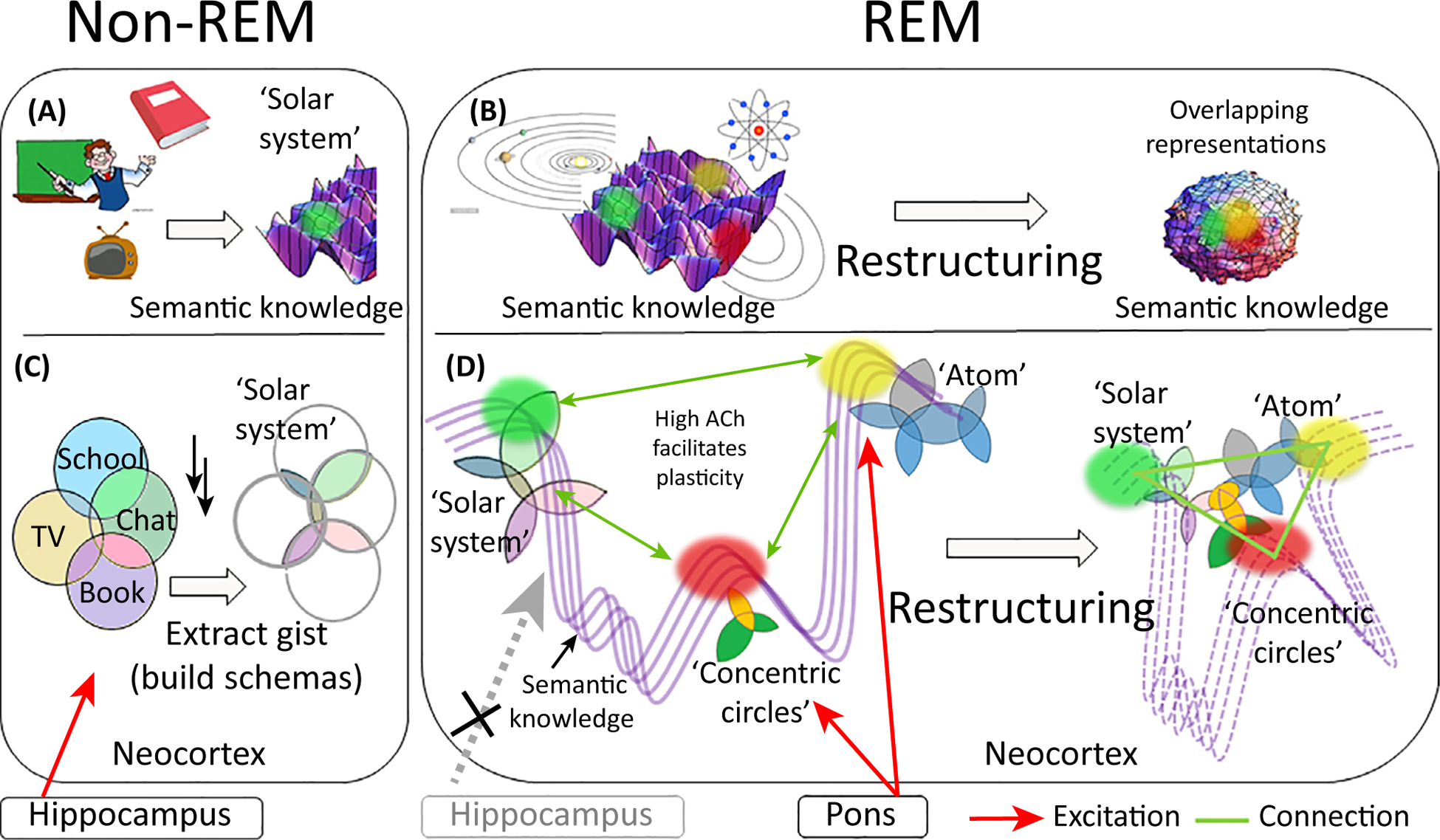Figure 1. The BiOtA Model.

(A,B) A simpler representation of the process also shown in detail in (C,D). (A) Consolidation of episodic memories of lessons in astronomy from teachers, books, and TV leads to formation of a semantic representation of the solar system in the neocortex (green spot on the purple 3D surface representing semantic knowledge space). (B) The new representation of the solar system is far away from pre-existing representations of the atom and of concentric circles in semantic space. If these schemas are replayed concurrently in REM sleep, the shared structure will be detected and semantic knowledge space will be restructured so they can be linked and mapped closer together. (C) Provides a more detailed representation of the above. In non-REM sleep the hippocampus controls replay in the neocortex (red arrow) ensuring that only memories relating to a specific state are replayed concurrently. Overlapping replay leads to potentiation of shared aspects of these memories, or gist abstraction. Forgetting may result in memory for only this gist (e.g., a basic schema). (D) In REM sleep the cortex replays salient schemas and PGO waves trigger activity in other randomly chosen schemas. This spreads across networks easily due to the high ACh, allowing coherence and resulting in a search process that allows detection of similarities between the target schema and cortical schemas stemming from very different tasks or experiences. When such commonalities are detected, novel links are formed between related concepts, leading to restructuring of semantic knowledge space. Abbreviations: Ach, acetylcholine; BiOtA, broader form of the information overlap to abstract framework; PGO, ponto-geniculo-occipital; REM, rapid eye movement.
